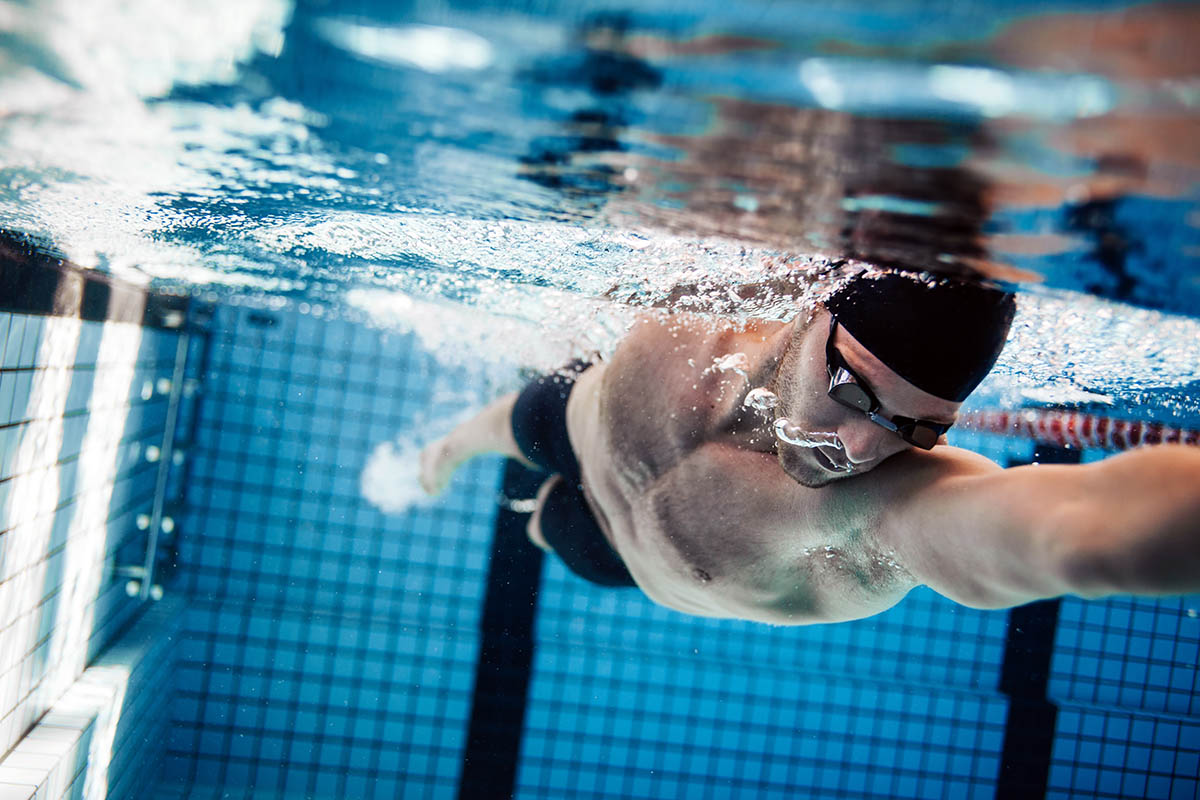Ditched the swim training when pools shut down? Here’s some dry training to help you transition back to the pool on reopening.
In this period, where due to the sanitary restrictions we are experiencing, it is not possible to train in the usual places for the swimmer, to keep the benefits of dry training from home, is the primary objective at any level.
The benefits can be summarized with the following key points:
- To prevent injuries that can come from the enormous amount of technical work in the water;
- To maintain neuromuscular efficiency, required by the high frequency of the arm strokes and flutter kicks;
- To improve start or turn explosiveness in swimming pool competitions;
After sharing with the champions their types of training, let’s see which exercises can be used at home, usually with very little equipment available or easy to find.
- Time needed: 35-40 ‘
- Equipment required: Pair of 8/10 kg dumbbells, 10/12 kg kettlebell, wellness ball, mat.
Warm Up
Phase 1: 5 ‘of mobilization, executing 5-10 circles with all the main joints like neck, shoulders, arms, elbows, wrists, pelvis, hips, knees and ankles;If you have the opportunity do some swimming pre-hab exercises, using a mini-band or an elastic band, such as gluts activation, core control in a mono podalic stance, scapula stabilizers, rotators cuff etc., being able to maintain these exercises consistently is a very healthy habit.
Phase 2: 10 ‘ Marching on-site with extended arms, alternating with Mountain Climbers on the floor and every 10-15 ” repeat some dynamic stretching exercises such as:
Marching
Knee to chest
Mountain Climber
Spiderman switches
Marching
Single leg deadlift
Mountain Climber
Thoracic rotation in 4 points kneeling
Marching
Opposite knee pull
Mountain Climber
Hip flexor lunge with arm reach
It is possible to increase the intensity of the warmup, by replacing the march with a run, or with some alternating split jumps, always on the spot.
This is a stability exercise for the whole body but it can also strengthen arms and shoulders. Starting in a push-ups position with the hands shoulder-width apart and shins placed on a Fitball. Bring the pelvis up in the air by rolling the ball in the direction of the hands. Stop in the upper position, aligning your pelvis shoulders and hands as better as possible, then slowly descend to the starting position.
- Perform 4 sets, 8-10 reps for exercise, at the end of each set 90” rest;

it is an exercise for the hip but also involving the back, core and legs. Hold one Kettlebell on one side and lift the ipsilateral leg off the ground by extending it behind you. The movement is performed slowly with the best range of motion and balance. To make it more challenging, reach out your free arm over the head and hold the position for 1”.
- Perform 4 sets for 6-8 repetitions for any side, at the end of each set 90” rest;
At Home: If you don’t have a kettlebell or dumbbell available the exercise can be done by reaching out both arms upwards from the start to the end. It is important to keep your free limbs in your best extension.
Kettlebell pull through plank
It is a dynamic stability exercise which dissociates the lower body work, holding the position, with the rotating movement of the upper part. The exercise consists in moving the load from one part of the body to the other, dragging it to the ground (placed on a small towel is better!) and passing it behind the supporting arm.
- Perform 4 sets for 8-10 reps per side, at the end of each set 90” rest;
At Home: If you don’t have a kettlebell or dumbbell available the exercise can be done, increasing the repetitions up to 10-12, staying on your forearm and performing a rotation with your free arm, trying to touch the floor as far possible in the opposite direction. On the way back, bring your free hand toward the ceiling, following it with the eyes.
It is a combination between a more strength-oriented exercise and an explosive one that replicate a position similar to the exit from the turn. The Thruster is performed starting with the Kettlebell held on the chest, performing a parallel Squat and ending with the load over your head with your arms reached up. The Jumps are performed keeping the streamline position into the water, arms over the head and palms facing forward, a countermovement is performed to jump as high as possible, trying to closing your legs in the air.
- Perform 4 sets, 2 of Thruster and 2 of Jumps with 6 reps for each exercise, at the end of each set 90” rest;




